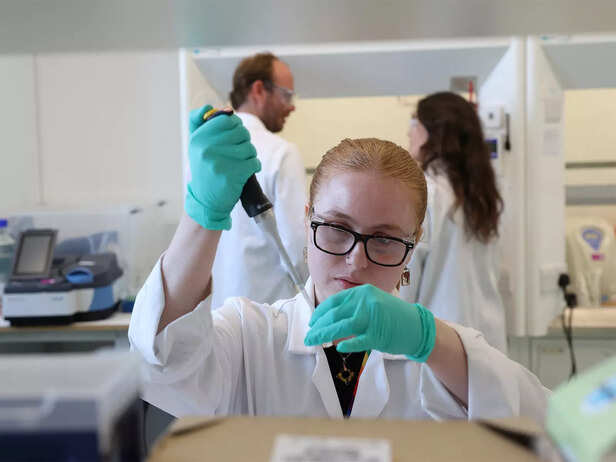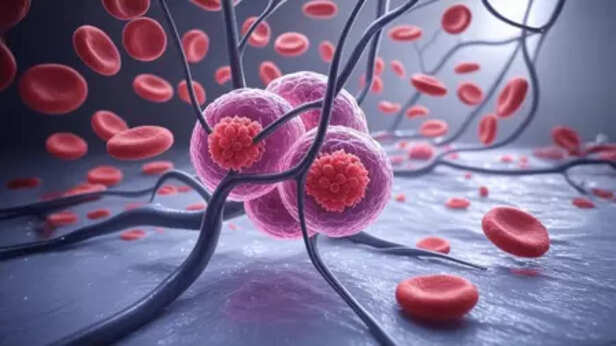Natural Path to Liver Care: Understanding Lawsone and Liver Fibrosis
Annanya Gupta | Oct 30, 2025, 23:59 IST
Henna Research for Liver betterment
( Image credit : IANS )
Henna’s hidden healing properties are transforming medical science. Researchers at Osaka Metropolitan University discovered that lawsone, a natural pigment from Lawsonia inermis, can treat liver fibrosis by blocking YAP signaling and deactivating hepatic stellate cells. The henna compound reduces scar tissue, increases cytoglobin expression, and promotes liver cell regeneration. This study, published in Biomedicine & Pharmacotherapy, offers a natural, Ayurvedic-inspired solution for chronic liver injury and cirrhosis prevention a hopeful breakthrough for millions in India and beyond.
Liver fibrosis means scar tissue grows inside the liver. This scar tissue replaces healthy liver cells. The damage happens slowly over time. Hepatic stellate cells create this scarring. These cells activate from liver injury. Causes include alcohol use hepatitis infection or fatty liver disease. The liver works poorly as more scar tissue forms. Without treatment fibrosis can become cirrhosis. Cirrhosis raises the risk of liver failure and liver cancer.

Scientists at Osaka Metropolitan University in Japan studied henna. Henna is a traditional plant called Lawsonia inermis. They found lawsone in henna leaves. Lawsone is a natural pigment. Tests showed lawsone reduced fibrosis markers in liver cells. It also raised cytoglobin levels. Cytoglobin is a protein that protects liver cells from damage. The study appeared in Biomedicine & Pharmacotherapy. These results prove lawsone helps manage chronic liver injury.
How Lawsone Works in Liver Fibrosis

Lawsone blocks the YAP signaling pathway. This pathway activates hepatic stellate cells. By blocking YAP lawsone stops these cells from creating scar tissue. The liver then maintains normal cell function. Lawsone also boosts cytoglobin. More cytoglobin means less oxidative stress. This prevents further liver damage. Lawsone supports natural liver repair. Scientists need more tests before human use.
OMU researchers plan a targeted drug system. This system will deliver lawsone straight to the liver. Direct delivery makes treatment more precise. It cuts side effects. Work is in early stages. Next steps include finding the right dose checking safety and starting human trials. Successful results could make lawsone a new treatment. It may reduce liver transplants.
Relevance for Indian Liver Patients
Liver disease affects crores of Indians. Alcohol hepatitis and poor diets are common causes. Current treatments are limited and costly. Henna has deep roots in Indian culture. People use it in traditions. This research links traditional knowledge with modern science. Lawsone from henna could lead to affordable Indian-friendly therapies. Patients should not self-treat. Always consult doctors.
OMU scientists will continue testing lawsone. They will check its benefits and safety in more trials. Positive results could give new hope to chronic liver patients worldwide. India could benefit greatly from such natural remedies.
Explore the latest trends and tips in Health & Fitness, Spiritual, Travel, Life Hacks, Trending, Fashion & Beauty, and Relationships at Times Life!
Osawa Metropolitan University Research Breakthrough

Liver fibrosis Study
( Image credit : ANI )
Scientists at Osaka Metropolitan University in Japan studied henna. Henna is a traditional plant called Lawsonia inermis. They found lawsone in henna leaves. Lawsone is a natural pigment. Tests showed lawsone reduced fibrosis markers in liver cells. It also raised cytoglobin levels. Cytoglobin is a protein that protects liver cells from damage. The study appeared in Biomedicine & Pharmacotherapy. These results prove lawsone helps manage chronic liver injury.
How Lawsone Works in Liver Fibrosis

Liver health research
( Image credit : IANS )
Lawsone blocks the YAP signaling pathway. This pathway activates hepatic stellate cells. By blocking YAP lawsone stops these cells from creating scar tissue. The liver then maintains normal cell function. Lawsone also boosts cytoglobin. More cytoglobin means less oxidative stress. This prevents further liver damage. Lawsone supports natural liver repair. Scientists need more tests before human use.
Future Treatment for Liver Fibrosis
Relevance for Indian Liver Patients
OMU scientists will continue testing lawsone. They will check its benefits and safety in more trials. Positive results could give new hope to chronic liver patients worldwide. India could benefit greatly from such natural remedies.
Explore the latest trends and tips in Health & Fitness, Spiritual, Travel, Life Hacks, Trending, Fashion & Beauty, and Relationships at Times Life!
Faq's ( Frequently asked question )
- What can I do today to protect my liver?
Stop drinking alcohol. Eat fresh home-cooked food. Avoid street food and oily snacks. Get vaccinated for Hepatitis B. Exercise daily and maintain a healthy weight. - How does henna help the liver?
Henna leaves have a natural pigment called Lawsone. Scientists found Lawsone blocks the cells that create liver scars. It also increases a protective protein named Cytoglobin. This helps your liver fight damage. - What is liver fibrosis?
Your liver gets injured over and over. Scar tissue forms like a tough fibre. This scar tissue is liver fibrosis. It makes your liver work poorly. - What are the first signs of a weak liver?
Your body gives clear signals. You feel very tired all the time. Your skin and eyes may turn yellow. Your stomach might swell. You could lose weight without trying.
